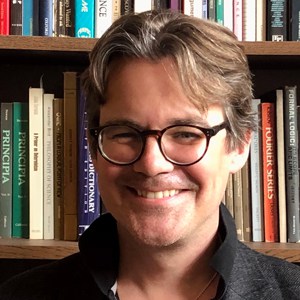Way-making (dao) that can be put into words is not really way-making,
And naming that can assign fixed reference to things is not really naming.
The nameless is the fetal beginnings of everything that is happening,
While that which is named is their mother.
Thus, to be really objectless in one’s desires is how one observes the mysteries of all things,
While really having desires is how one observes their boundaries.
These two—the nameless and what is named—emerge from the same source yet are referred to differently.
Together they are called obscure.
The obscurest of the obscure,
They are the swinging gateway of the manifold mysteries.
Laozi (Lao Tzu)
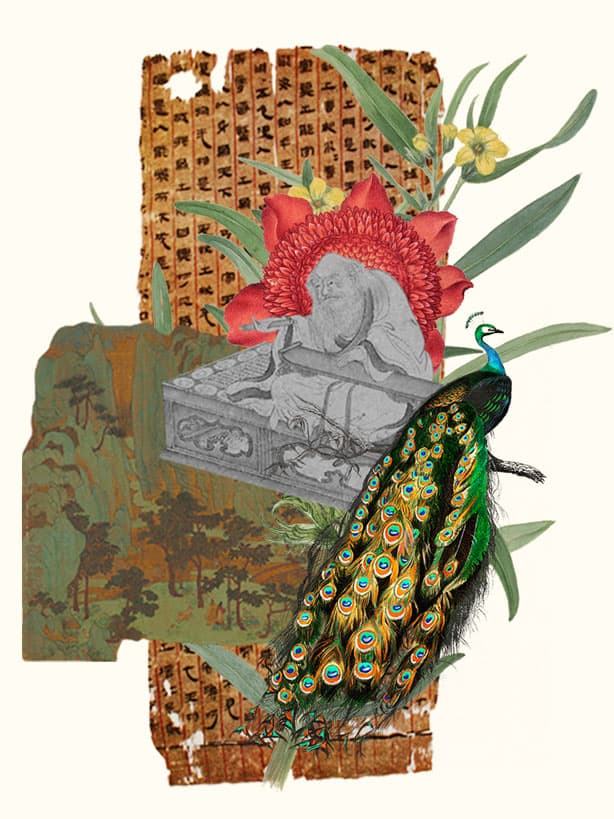
Dao De Jing
Laozi (Lao Tzu)
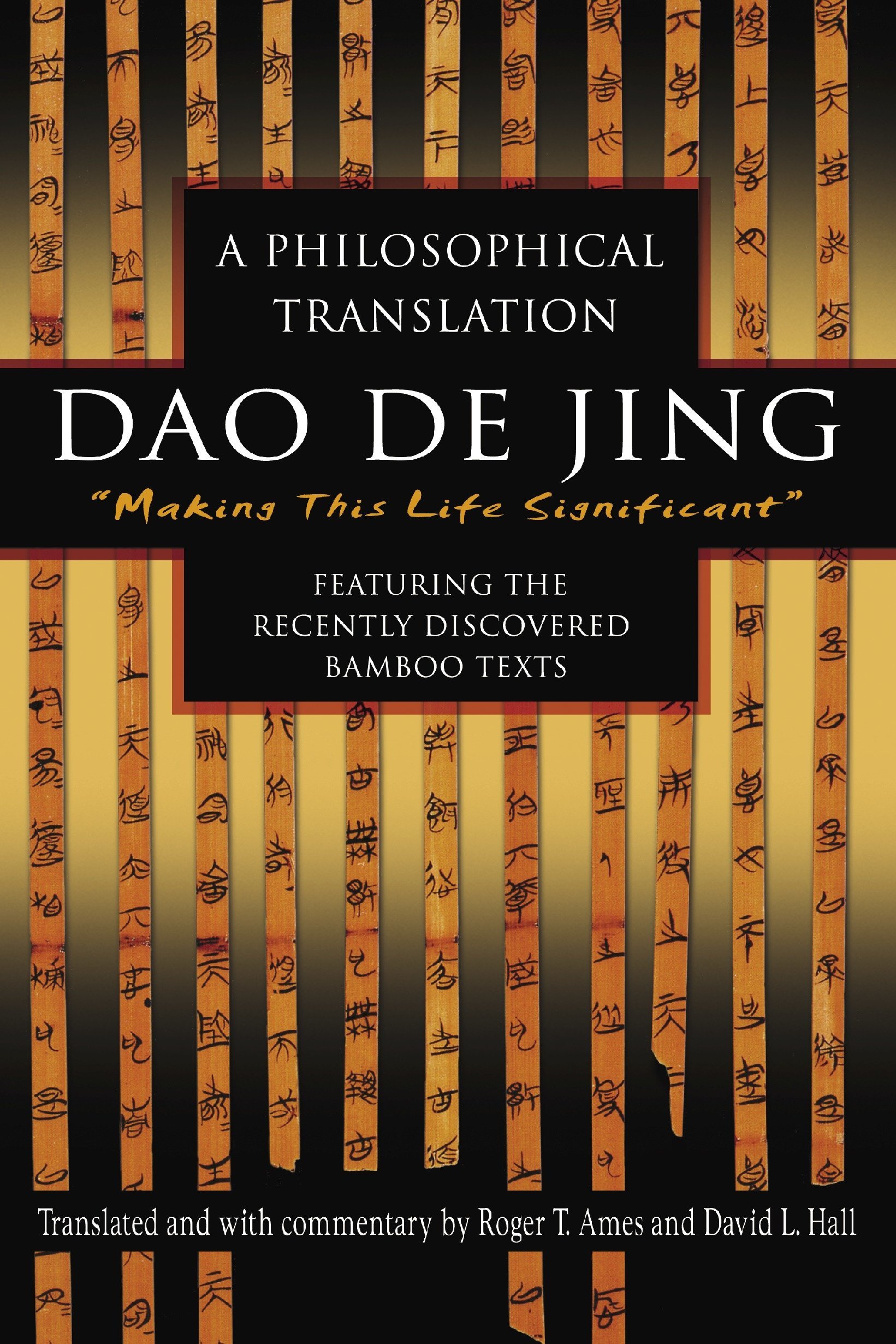
Ames and Hall, ISBN: 978-0345444196
The Dao De Jing is a series of poetic reminders that forms the seminal text of Daoist thought.
In it, the reader is encouraged to be in the dao (way) in order to develop their de (virtue/particularity/character) through the cultivation of non-action and non-desire. To articulate what the dao is with any kind of precision is impossible because it transcends any kind of linguistic or conceptual articulation. The best way to think of the world of the Dao De Jing is as an event ontology rather than a substance ontology—a world where processes and transformations are primary over things and their properties. Heavily influenced by the tradition of the I Ching, the Dao De Jing assumes its cosmos of the transformation of hexagram forms, opposites into opposites, yin into yang and vice versa. The dao can thus be thought of as a kind of internal logic or rhythm of these natural transformations in the cosmos. Part of tapping into dao and developing your de, as a cause or maybe also as a consequence, are the cultivation of wuwei (non-action/effortless action/non-coercive action) and wuyu (non-desire/objectless desire). Wuwei and wuyu are constitutive of developing your de while being in the dao. While the focus seems to be on the individual consciousness and the development of its de through its relation to dao, the interconnection of all things entails that when the sage achieves this, the rest of the natural world (heaven and earth) as well as the social-political world harmonize in response.
Why This Text is Transformative?
This text is fascinating to anyone interested in texts as a way of being in the world.
The Dao De Jing is attributed to Laozi, translated as “The Old Master,” a possibly fictitious legendary contemporary of Confucius. As such, the Dao De Jing is a response to Confucianism and its emphasis on social relations grounded in the family to create a harmonious cosmos. Daoism criticizes Confucianism here by claiming that the exclusive focus on proper social relations is an attempt to fix and concretize dao in a way that will ultimately backfire and miss the mark. While both Confucianism and Daoism emphasize wuwei (non-action), Daoism seems to expand the sage’s realm of focus beyond the merely societal to include nature and the entire cosmos. Later, Buddhism would combine its unique features with Daoism to produce Zen. This text is fascinating to anyone interested in texts as a way of being in the world. Much like the Stoic works of Marcus Aurelius or Epictetus, the Dao De Jing is a text that you live with, using its reminders to guide and shape your daily experience. This work will also be of interest to anyone concerned with how to articulate and conceptualize the ineffability of mystical and religious experiences.
A Focused Selection
Study Questions
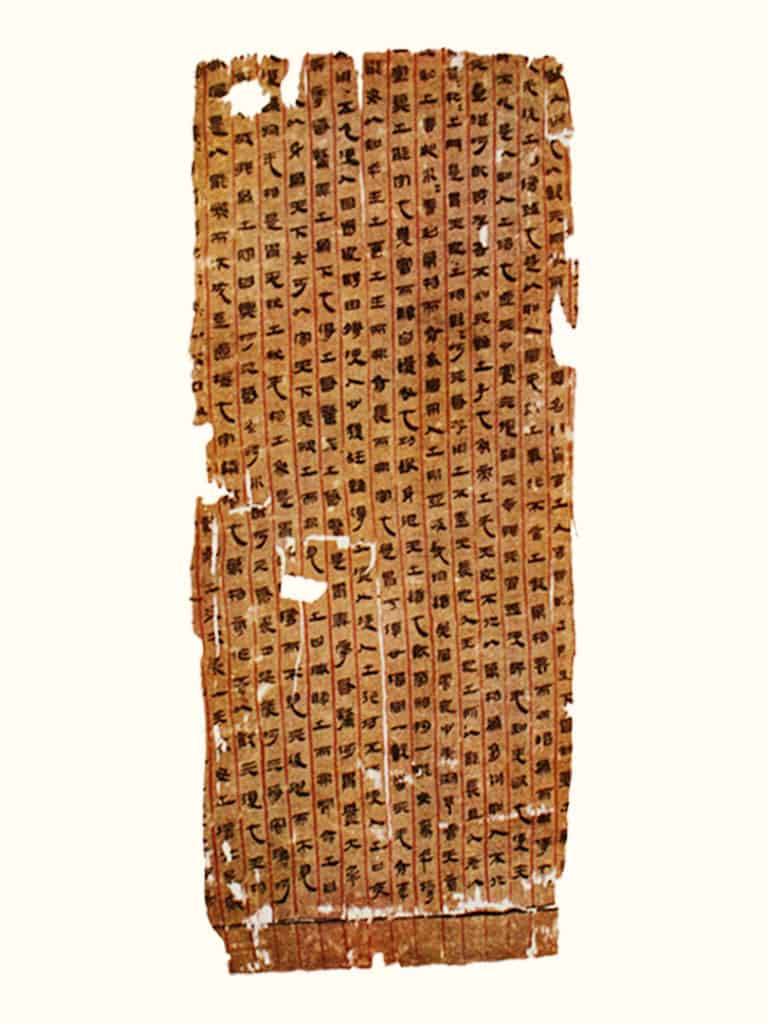
A central concept in the Dao De Jing is that of wuwei (non-action or non-coercive action). Look at Chapters 1, 2, 43, 48, 63, and 64. What is wuwei and how is it different from other types of acting? What is the result or purpose of wuwei? Think about your own life and times when you feel like you have experienced wuwei. What was it like?
The Dao De Jing often associates dao with namelessness. Look at Chapters 1, 14, 32, 37, and 41. What is the connection between dao and namelessness? In general, how can we say something about what cannot be articulated, or think about something that transcends expression? One response may be to give up on it altogether. How workable is this response? What role does the transcendent play in your life or in framing your finitude (if any at all)?
Buddhism claims that the cause of suffering is desire and thus (at least according to some interpretations) the key to eliminating suffering is to eliminate desire. Look at Chapters 1, 7, 22, 37, 44, 46, and 77 of the Dao De Jing that talk about wuyu (non-desire). How is the concept of wuyu similar to and/or different from Buddhism’s approach to desires? Reflect on the role desire plays in your life. What are some positive and problematic aspects of it?
Building Bridges
A Recommended Pairing
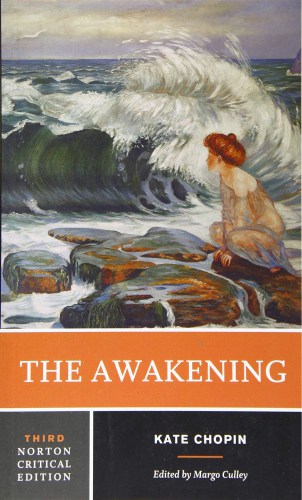
A Vindication of the Rights of Woman pairs well with Kate Chopin’s The Awakening. How does Wollstonecraft’s text provide us with a lens to understand Edna and Leonce’s marriage? How does Wollstonecraft’s discussion of virtue, reason, and education help to explain Edna’s sense of dissatisfaction with her life as well as the failures she meets with in her relationships? Do any of Wollstonecraft’s warnings about an uneducated mother resonate in Chopin’s depiction of Edna?
Supplemental Resources
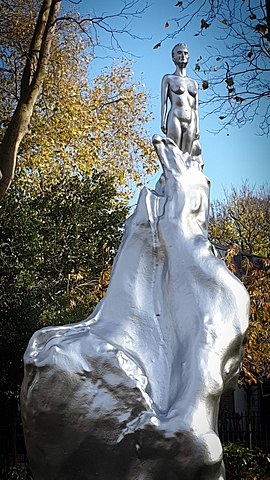
A Sculpture to Mary Wollstonecraft in Newington Green, London. It was sculpted by British artist Maggi Hambling. It was unveiled on November 10, 2020.By Grim23 - Own work, CC BY-SA 4.0
What did Mary Wollstonecraft write about in A Vindication of the Rights of Woman?
Dangerous Minds Episode 4 - Mary Wollstonecraft
Text Mapping
Discipline Mapping
Philosophy & Religion
Humanities
Psychology
Page Contributor
